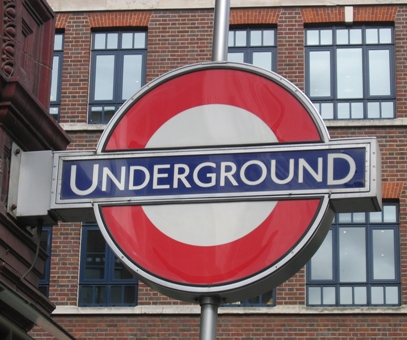 What is the tube? Many people new to London might not know that the tube is just another name for the metro, subway or underground train system. London’s underground train network is one of the oldest in the world, the oldest being probably Moscow’s.
What is the tube? Many people new to London might not know that the tube is just another name for the metro, subway or underground train system. London’s underground train network is one of the oldest in the world, the oldest being probably Moscow’s.
You need a ticket before you get on the train. You can buy tickets at the ticket office or at the machines. On Sundays and bank holidays, ticket offices in smaller train stations are closed and if the ticket machine is out of order, you will be unable to buy a ticket before getting on the train. Fortunately, in these circumstances, you can buy a ticket at your destination before crossing the barrier.
There are usually guards at the barriers but again, in smaller stations, sometimes the guard is elsewhere, smoking a cigarette or on a platform. When they leave barriers unattended, they usually open these in case some people have a problem with their ticket and are unable to get in or out.
This means that if you cannot buy a ticket before getting on the train because the station is unmanned and the machine is down, the barriers will be open and you will be able to board your train. At your destination, if you are getting off at a quiet station outside central London on a Sunday or bank holiday, chances are the barriers will be open and unmanned. In this case you will be able to get out without needing a ticket, thus having travelled without having bought a ticket. For this reason, there are ticket inspectors operating.
There are ticket inspectors on board the trains but these are very very rare and you might never encounter them. Most often, ticket inspectors are within the station doing spot checks and during rush hours in order to catch most people. If you are travelling without a ticket on a Sunday and a ticket inspector stops you, then it is not your fault if you haven’t been able to buy a ticket at the ticket office because it was closed.
Oyster card
Prior to the introduction of oyster cards, it was easy to pass on a day or weekly ticket to someone else or buy a ticket at your destination and pretend that you got on just one stop before in order to pay less. There were also many ticket touts taking tickets from passengers who no longer needed them at the end of the day and selling these on for a profit to other passengers unwilling to pay full price for a ticket. London Underground was losing a lot of money that way and pushed hard for the introduction of Oyster cards.
Oyster cards are plastic cards with an embedded microchip which records all details of travel journeys. When you buy a season ticket, you have to hand over your personal details. London Underground is then able to track all the journeys that you make and also has your personal details to match them. Despite this massive breach of privacy, it was allowed to go ahead with the Oyster card system. The UK government also has a vested interest in this to combat terrorism, especially after the tube bombings of the 7th July 2005. With the Oyster card tracking all passengers’ movements, they can no pick the closest station as their point of entry when buying tickets at the gates.
Get a ticket receipt
The most important thing to remember when using the Oyster card is to get a receipt of the money you have put onto the card. If there is ever a mistake and the money doesn’t appear on your card, you cannot see it unless you go to a machine or the ticket office and get your card checked. Previously, when you handed over your money, you would get a paper ticket with the value on it. With an Oyster card, nothing shows whether there is money on the card or not. This is why it is very important to get a receipt when putting money on the card, even if it is for £1. That way, if someone inspects your card and says there is no money on it, you will be able to show the receipt and not have to pay a £50 fine because of £1.
Read more: Stratford transport hub